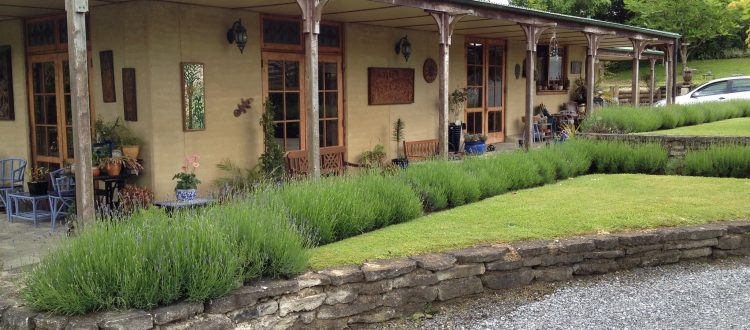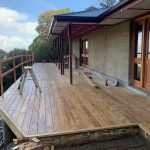Rammed earth home stands up to 100-year flood
BY PAUL GERAETS. ORGINALLY PUBLISHED IN 2012.
It was with considerable alarm and some amazement when I heard of the flooding of one of the rammed earth homes we built nearly 20yrs ago.
There is no easy way to put this, but there was also a touch of vindication – the kind of home that people used to think might wash away in the rain when I first started out, stood up to this disaster beautifully compared to other houses. Everyone involved was astounded. This was considered a 100yr flood.
Rammed earth homes have stood for centuries and are renowned for their capabilities to survive earthquakes, floods and all that nature can throw at them. But until now none of our homes had been put to the test.
For two hours water was pouring through the Martin’s home from two different angles: run off from the road and from a neighbour’s property with drainage issues. The water dropped over retaining walls (destroying a good deal of them) and literally flowed through their home. Wave after wave swept through as they opened the French doors at the other end of the house to let the water back out again. Fire crews could do little except move furniture onto beds and get everything out of the water as was possible.
Paul Geraets
To give some idea of the amount of water pouring over the whole property, one just needs to hear the driveway had to be redone as there were waist-deep holes in it and the gully running alongside the drive was completely scoured out, losing at least several thousand cubic metres of embankment.
What was the damage to the house? New carpet needed to be laid, the oven refused to work again, the lounge suite was condemned (due to agriculturally contaminated water from farmland) and hardwood furniture was left with enough water damage for Eunice to be sending it off for another French polish before it came back to her immaculate home.
What is the usual damage for a flooded house? Here are a few outcomes for everyday building materials.
Timber frame walls – these can be moved off a concrete slab floor in a severe flood. They can soak up a lot of water, taking a long time to dry out.
Timber floor – it’s likely the whole house would have moved off its piles/foundations. Even without getting swept off its foundations this type of floor will typically take a long time to dry out and likely suffer permanent water damage.
Plasterboard walls – they’ll soak up a lot of water, expand and potentially damage the painted surface.
Particleboard floor – this can swell and release toxins used in the glue.
This list is by no means exhaustive.
One of the significant things we noticed when we visited the Martin’s 6 weeks after the flood, was the lack of any damp smell. There was nothing inside to indicate the river that had flowed through the house. There was the faintest of dust marks clinging to the outside walls up to 500mm above ground level where they were clearing away wheelbarrow loads of silt from the front of the house, but no water damage to the walls or discolouration.
Two weeks after the flood Peter and Eunice moved back in their bedroom even though the rest of their home wasn’t back to normal. They just wanted to be back in their own home.
Our summary? Unstoppable force meets immovable object – immovable object wins.
Read the Stuff article here: http://www.stuff.co.nz/waikato-times/news/7344379/Water-pours-through-home



